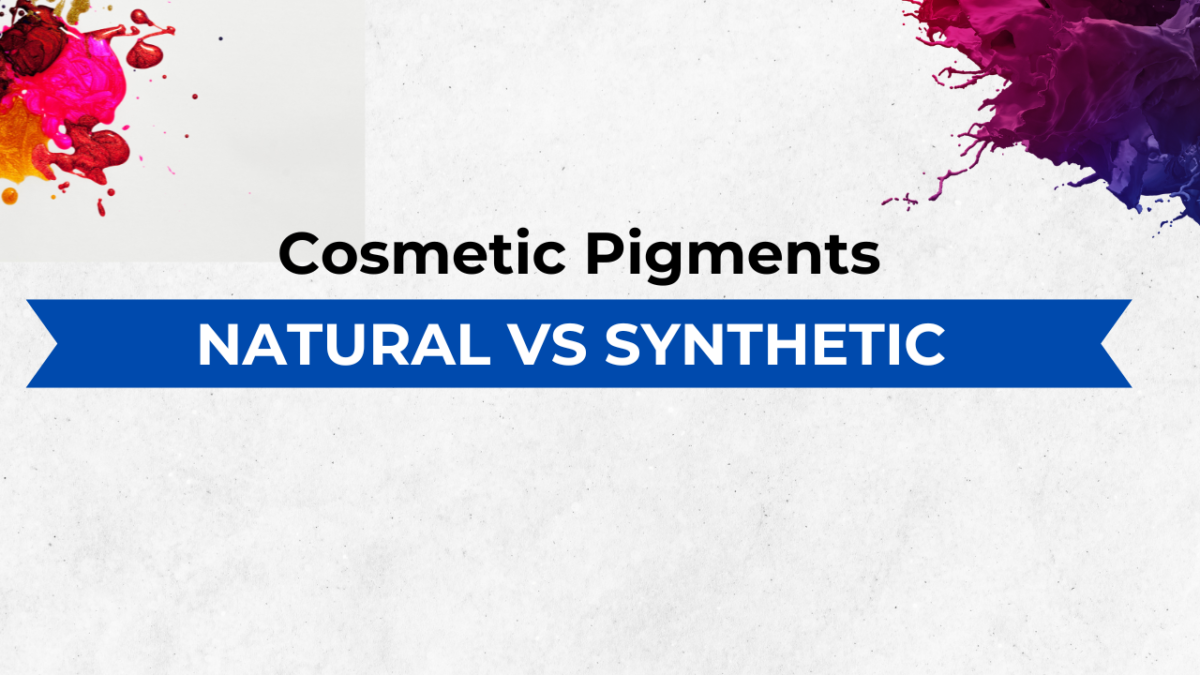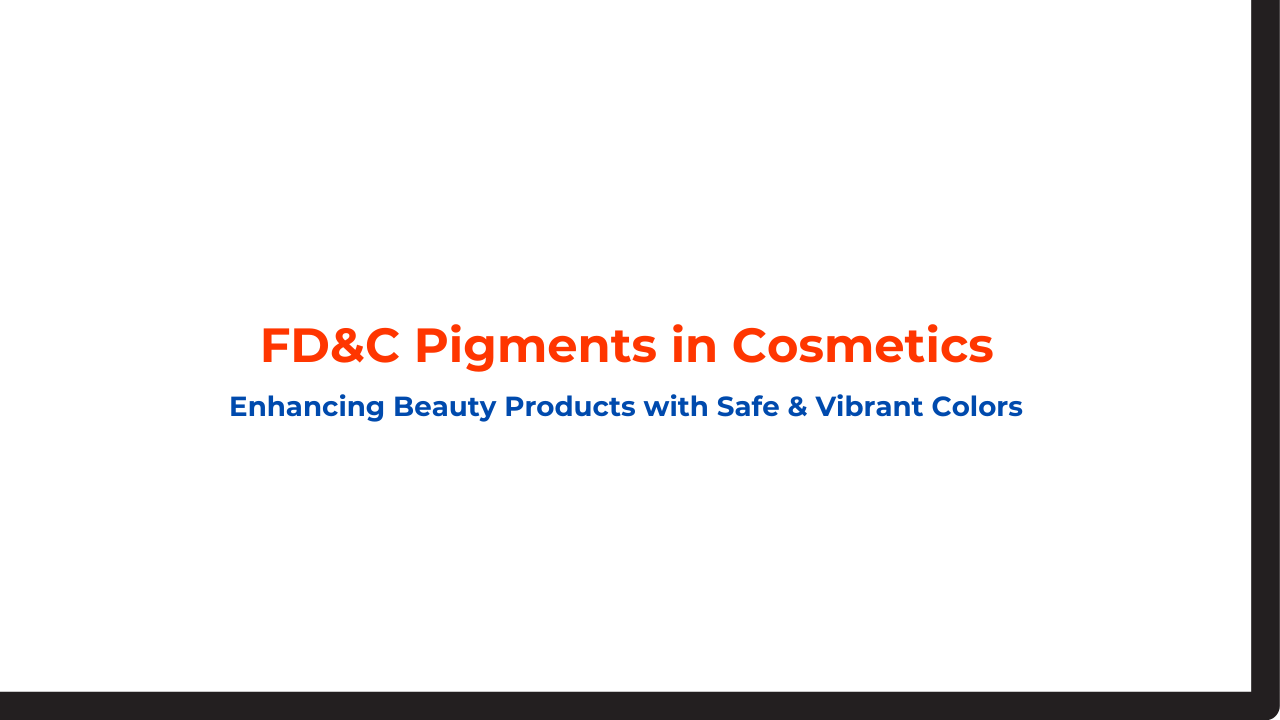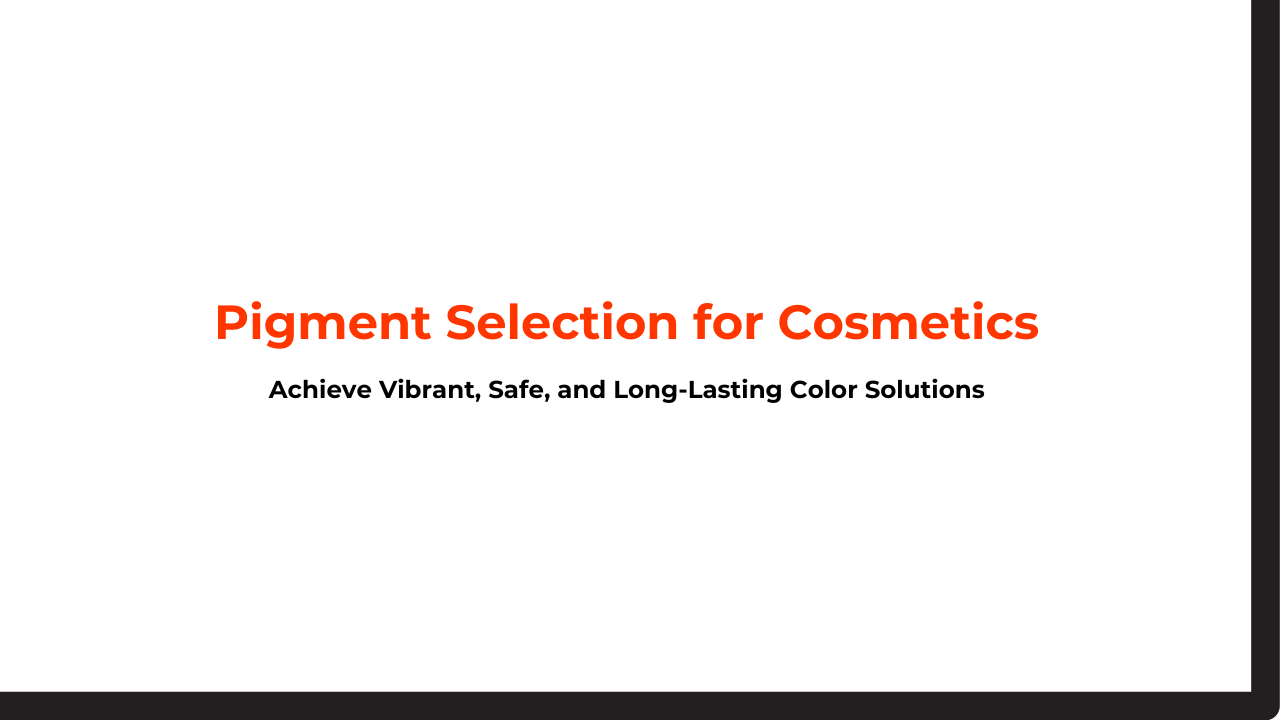Cosmetic pigments are finely ground insoluble particles that color cosmetics and personal care products. Pigments are crucial in cosmetics, including nail polish, makeup, and soap. This blog will discuss natural vs. synthetic cosmetic pigments and explore which is better for your skin.
Cosmetic pigments can be organic or inorganic, derived from natural sources, or synthetically processed in a laboratory. They are mainly classified as natural and synthetic cosmetic pigments, each with its own properties and different use cases.
There has been a continuous debate about natural vs. synthetic food colors based on their different strengths and properties. Artificial dyes and pigments are essential because they can produce more vibrant, bright colors than natural dyes and pigments.
If you are a business or an individual professional wondering about natural and synthetic cosmetic pigments and which one works best for your skin, continue reading this blog.
What are cosmetic pigments?
Cosmetic pigments are finely ground, insoluble particles that color various cosmetic products, from skin and personal care items to makeup products. They are classified as natural cosmetic pigments and synthetic cosmetic pigments. These pigments are mainly abstracted from natural sources or synthetically processed.
What are natural cosmetic pigments?
Natural cosmetic pigments are colorants, colors, or color additives derived from natural sources, such as plants, trees, minerals, or microorganisms, without toxicity, and provide multiple benefits to your skin.
These are natural color additives for coloring cosmetics and skin care products. Botanicals, Minerals, and Microorganisms are the primary ingredients of cosmetic pigments.
Properties of natural cosmetic pigments
Natural pigments provide greater antioxidant properties that protect your skin from premature aging and environmental stressors. Natural colors are best known for adding a pop of color to cosmetics. Annatto is a natural red color additive or colorant that provides a natural glow to your skin and hair.
Here are some key properties of natural cosmetic pigments:
- Turmeric: It offers excellent anti-inflammatory and bleaching properties.
- Beeswax: It possesses greater soothing and healing properties and provides a beautiful color to balms and butters.
- Beetroot: It has natural lightening properties that lower the pigmentation and give a pink tint to your lips.
- Hibiscus: It contains excellent antioxidants and vitamins that impart melanin, a naturally occurring pigment, to provide natural color.
What are synthetic cosmetic pigments?
Synthetic cosmetic pigments are pigments derived from synthesis processes. They are typically chemically purified from coal tar and petroleum oil derivatives to eliminate hazardous heavy metals. Making synthetic pigments involves combining multiple materials through thermal or chemical reactions.
However, the importance of natural dyes and pigments can’t be overstated since they offer multiple health benefits. Furthermore, shades in synthetic pigments are less stable than those in natural mineral pigments, which, as a result, are more resistant to UV rays.
Properties of synthetic cosmetic pigments
The following are the main properties of synthetic cosmetic pigments:
- Transparency: Synthetic mica offers excellent color intensity due to its transparency.
- Smoothness: It offers a smooth, even surface structure.
- Color: Synthetic pigments are best known for offering a comprehensive range of colors and shades.
- Stability: Synthetic pigments offer greater stability than natural pigments and possess excellent resistance to heat, light, and hydroxyl ion concentration.
- Opacity: Pigments are insoluble in the product, providing good opacity and coverage.
- Shatter-proof: These pigments offer great flexibility and are shatter-proof than natural mica.
- Fading: These are less likely to fade than dyes.
- Allergies: Pigments tend to have a lower risk of causing allergies.
- Non-toxic: Some synthetic pigments, such as synthetic red oxide, are non-toxic.
Natural vs Synthetic cosmetic pigments: Which is better for your skin
Pigments are not limited to cosmetics and skin care products; they are also widely utilized in various other applications, including foods and drugs. Natural cosmetic pigments are generally considered safer and more environmentally friendly than synthetic pigments, but other factors, such as cost, efficacy, and preferences, must also be considered.
1. Cost
Natural cosmetic pigments are more costly than synthetic cosmetic pigments. However, with the growing demand for natural ingredients, manufacturing natural ingredients will likely improve, making natural ingredients the best and most cost-efficient.
2. Environmental impact
Natural pigments are more environmentally friendly and have less environmental impact than synthetic ones. However, the demand for natural ingredients can result in deforestation, further leading to global warming.
However, synthetic pigments can last hundreds of years after being disposed of in a landfill, treatment plant, or the environment.
3. Efficacy
Synthetic ingredients can be more cost-efficient than natural ones, particularly targeting certain hair and skin issues.
4. Color
There are a variety of natural pigments, from earthy hues to vibrant shades. Several factors contribute to the popularity of synthetic pigments in cosmetics, including their vibrant colors, stability, and affordability.
5. Safety
Since natural pigments are more environmentally friendly, they typically cause fewer allergic reactions or skin irritation. That means they are perfect for sensitive skin. On the other hand, some synthetic pigments, like PPD, can result in allergic reactions, including itching, rashes, and blisters.
Conclusion
The bottom line is that natural cosmetic pigments are generally safer and healthier when applied to the skin than synthetic cosmetic pigments. However, choosing natural and synthetic cosmetic pigments depends on your preferences, skin type, concerns, and basic needs.
The best natural pigments are derived from sustainable sources free of contaminants, so select high-quality, sustainably harvested sources. Certified organic products are of the highest quality and are free of pesticides or synthetic additives.
If you’re looking for the highest-quality cosmetic pigments and dyes to meet your business or personal needs, look no further than Hridhan Chem.




